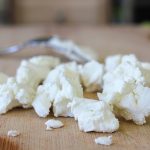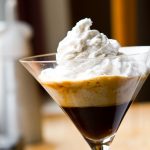
Q: When searching for a fast way of heating and boiling milk, people often wonder whether they can microwave it. Since we all know that there is such a mess when milk boils over, there is this rather serious question: Is it even possible to microwave it? What is the proper way of doing it without making a mess or even worse – destroying your microwave?
Heating Milk in a Microwave
If you only want to heat your milk a bit and not to make it boil, you would have to do the following:
- Pour milk into a glass jar (or a similar container ) but do not fill more than the half of the jar
- You will need about 50 seconds to make it warm, to make it have the room temperature
- If you heat your milk longer than 50 seconds, it will probably start to boil, depending on the microwave’s wattage
- If you don’t need boiling, you should be prepared to take your milk out of the microwave after 50 seconds.
Boiling Milk in a Microwave
If you want to boil your milk, you should be very careful. You should keep an eye on it all the time and stir it every 15 seconds. To be sure that there will be no boiling over, reduce you microwave’s power to the middle, or even low. You should never try to heat or boil your milk at the highest microwave power to prevent boiling over.
Warming Milk for a Baby in a Microwave
If you only want to heat a baby formula, that is also possible and even done in hospitals daily. You should dissolve formula in the baby’s bottle and place that bottle in the microwave. You should be careful not to overheat it, so do not heat it longer than 40-50 seconds. After taking the bottle out of the microwave, you should shake the bottle since it is possible that the milk is not evenly warm.
You could also heat cold mother’s milk the same way but be careful not to make it too hot for a baby to drink.
Making a Milk Foam in a Microwave
If you want to make a milk foam, you have to do the following:
- Pour some milk in a glass jar, but do not make it full, and close the jar
- Shake the jar for about one minute to make the foam
- Open the jar and place it in the microwave
- Let it stay there for about half a minute at the middle heating power
- After 30 seconds, your milk foam is ready to be used
Why Does Milk Boil Over And Water Doesn’t?
Milk is heavier than water and more viscous. It also boils at a bit higher temperature than water. Milk does contain water in itself but also some additional substances: fat, calcium caseinates, and proteins.
These substances gather at the top of the milk’s surface when heated and they form a thin skin. This skin can only go up pushed by the boiling pressure from the above. This is why milk boils over and water doesn’t.
Why Do We Boil Milk?
The main reason is simple – to remain healthy. If it is taken directly from the source (cow, goat, etc.), milk often contains many microbes which are dangerous for people. Boiling kills these pathogens. On the other hand, we may buy two types of milk from the store – pasteurized and the raw one.
The pasteurized type doesn’t require boiling since the process of pasteurization done in factories has the same effect as boiling and this milk is often a bit more expensive than the raw milk. The raw milk has to be boiled to kill the dangerous bacteria it may (and often does) contain.



